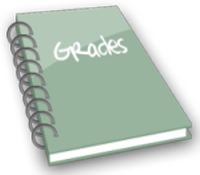Communicating Within Online Courses
(and Common Components of a Typical Online Course)
Course Information
While the Course Information Area is typically located as the first Module on the same page as the modules that contain the course content (outlined later in this document), it is worth separating this area out for description purposes since it is so important. The Course Information Area (which may be called different things in different courses) contains the documents that you need to understand the requirements and expectations in your online course. The course syllabus, course schedule, instructional documents for participating in discussions and submitting assignments, and evaluation/grading criteria are typically explained in detail. While a fully online course does allow for a certain degree of flexibility on the part of the student, there will be deadlines that must be adhered to and policies/requirements that must be followed. It is crucial that an online student study and thoroughly understand the information that the instructor has posted in this area before jumping in to class participation!
Communication Areas for Important Announcements and Instructor/Student Questions
Most online courses have areas in which instructors and students can communicate with each other to ask questions or post announcements. The three most common areas for this type of communication in our courses at BCC are the Course Announcement Area, the Course Mail and the public Ask a Question area (although not all courses utilize this last feature). The nature of th e communication will determine which of these areas is the appropriate course location. Below, each one is briefly described.
e communication will determine which of these areas is the appropriate course location. Below, each one is briefly described.
Course Announcements -- The Course Announcements area exists on the main course page and allows faculty to relay timely information to the entire student roster. Announcements are course specific and are archived, so that students can see any past announcements they may have missed. Announcements that might be posted to this area may include changes to the course schedule, reminders of upcoming due dates, tips for preparing for exams and other course-related broadcasts. While the majority of Course Announcements are visible by all students in the course, it is possible that a single announcement be tailored to be visible by only one particular student or a group of students in a course.
Ask a Question -- Your online course may contain a public area (or multiple public areas) in which you can ask a question regarding course content. At BCC, this area is often labeled "Ask a Question" and is typically monitored by the instructor. Because it is a public area, however, students can also see questions that have been posted and often are encouraged by the instructor to help other students. If your course has a public help area such as this take advantage of it! If you have a question, chances are others in the course may have the same one as well The public "Ask a Question" area may already have the answer you are looking for!
Modular Structure
Lecture Area -- This area within a module replaces the traditional lecture that would occur in t he classroom. Since the instructor is not present to conduct a live, interactive lecture in an asynchronous online course, other formats are utilized to deliver information to students. One of the most effective and widely used forms of online lectures is the written form. The document you are currently reading is a perfect example of such a document. Written lectures typically contain information covered in the current module, supplements information provided in the reading (if the course uses a textbook) and ideally emphasizes the concepts that the instructor feels are most important. The lecture can take on many forms from a simple text document to an interactive tutorial. Below is a listing of what you might find in the Lecture Area of your online course:
he classroom. Since the instructor is not present to conduct a live, interactive lecture in an asynchronous online course, other formats are utilized to deliver information to students. One of the most effective and widely used forms of online lectures is the written form. The document you are currently reading is a perfect example of such a document. Written lectures typically contain information covered in the current module, supplements information provided in the reading (if the course uses a textbook) and ideally emphasizes the concepts that the instructor feels are most important. The lecture can take on many forms from a simple text document to an interactive tutorial. Below is a listing of what you might find in the Lecture Area of your online course:
- Text documents containing content, concepts, images and examples that would typically be presented in a live face-to-face course lecture
- PowerPoint Presentations
- Downloadable files such as Word, Excel, .pdf's that contain supporting information for the module
- Links to multimedia files such as audio or video or documents with embedded multimedia within them
- Links to additional resources such as online articles or activities that reinforce the material learned in the module lecture
 Dropbox Assignments -- The dropbox is an area that allows a student to submit an assignment to the instructor. Examples of assignments that might be submitted using the dropbox area are written essays, research papers, tutorials, end of chapter questions or other activities that have been completed offline. The instructor typically will give instructions regarding their preference for submitting assignments and often require assignments be submitted as an attachment in the dropbox area. The dropbox makes it easy for students to submit their work and then find their grade later. Many instructors also include comments in the grading area as well.
Dropbox Assignments -- The dropbox is an area that allows a student to submit an assignment to the instructor. Examples of assignments that might be submitted using the dropbox area are written essays, research papers, tutorials, end of chapter questions or other activities that have been completed offline. The instructor typically will give instructions regarding their preference for submitting assignments and often require assignments be submitted as an attachment in the dropbox area. The dropbox makes it easy for students to submit their work and then find their grade later. Many instructors also include comments in the grading area as well.
Discussion Forums -- The discussion area is an important component of many of the fully online courses offered at BCC. Since instructor and
students do not meet face-to-face, there is typically not much of an opportunity for real-time interaction on a regular basis. The discussion area within the Learning Management System provides an opportunity for asynchronous conversations in which one individual can post a message at one time and another individual can respond at a later date or time. In a discussion forum, all postings are neatly located in one place and can be viewed in a "threaded" format, which makes it very easy to see who is responding to who. Asynchronous discussion forums often lead to a very thoughtful and engaging exchange of ideas as students have time to think about and reflect on their response prior to posting. Asynchronous discussion forums also work to build class community and contribute to creating a learning environment where students feel connected when they all may not be physically located in a single geographic area.
Assessments (Quizzes and Exams) -- A majority of the online courses at BCC utilize some form of assessment with quizzes or exams. The tools built into the Learning Management System to deliver these assessments give the instructor many options that they can use to customize delivery. For example, there are several types of questions available such as multiple choice, true/false, short answer, matching and essay to name a few. In addition, there are settings to control the time limit of the assessment once a student begins and other controls that dictate whether a student can return to a question once it has been answered. It is, therefore, very important to study for an online exam or quiz as you would for one that you would take face-to-face!
Additional Content Items -- In addition to the main content items mentioned above, many online courses also include other items such as (but not limited to) study guides, interactive activities such as flash cards and online games, case studies, small group work, glossaries, guest speakers, and webquests.

Report Functionality
If an instructor chooses to utilize the built-in gradebook for the course, the student has the ability to run reports to see a listing of their graded items in the course. Instructions for accessing grades for a particular course can be either found in the Course Information documents or by asking the instructor through the course mail.
For additional information regarding Online Courses at SUNY Broome, please visit the Online@SUNYBroome Website at:
www.sunybroome.edu/online
